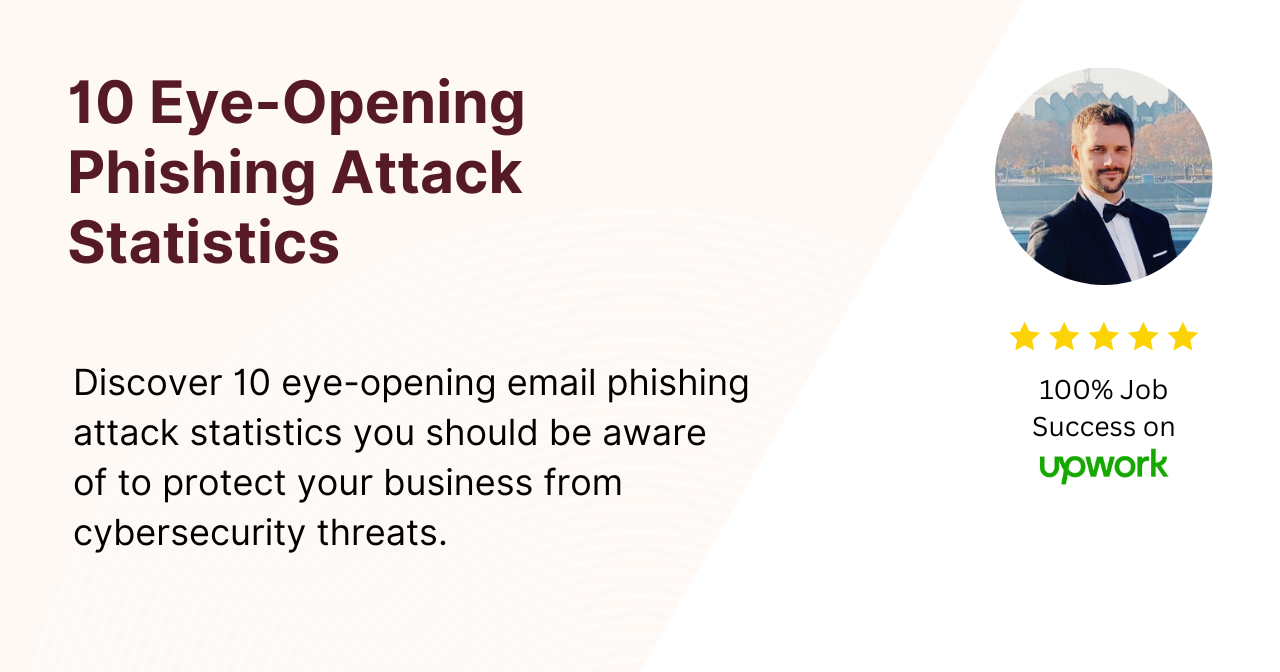Phishing attacks are one of the most common and dangerous cyber threats facing businesses and individuals today.
These social engineering attacks trick victims into revealing sensitive information or installing malware through deceptive email messages.
The consequences can be severe, from data breaches and financial losses to full-scale ransomware infections.
To understand the scale and impact of the phishing problem, it’s important to look at the latest statistics.
Here are 10 eye-opening email phishing attack stats you need to know:
- 91% of cyber attacks start with a phishing email. (Verizon 2023 Data Breach Investigations Report)
- Over 90% of successful data breaches are attributed to phishing. (Cofense 2023 Phishing Trends and Intelligence Report)
- The average cost of a successful phishing attack is $4.65 million. (IBM 2022 Cost of a Data Breach Report)
- 1 in 4 employees will click on a phishing link. (Proofpoint 2023 State of the Phish Report)
- Phishing attacks have increased by 61% since the start of the COVID-19 pandemic. (Barracuda Networks 2022 Spear Phishing Report)
- 76% of organizations experienced a successful phishing attack in the past year. (Ponemon Institute 2022 Cyber Resilient Organization Report)
- Ransomware attacks often start with a phishing email – 85% of ransomware incidents involve phishing. (Verizon 2023 Data Breach Investigations Report)
- Phishing emails are 8 times more likely to be opened on a mobile device compared to a desktop. (Proofpoint 2023 State of the Phish Report)
- The most common type of phishing attack is impersonation, accounting for 78% of all phishing attacks. (Cofense 2023 Phishing Trends and Intelligence Report)
- Phishing is the top attack vector used in business email compromise (BEC) scams, which cause over $43 billion in losses annually. (FBI 2022 Internet Crime Report)
These statistics paint a concerning picture – phishing is a widespread, costly, and constantly evolving threat.
Businesses and individuals must take proactive steps to educate themselves, implement robust security measures, and stay vigilant against these attacks.
Cybersecurity awareness training, email filtering, multi-factor authentication, and regular data backups are all critical defenses against phishing.
By understanding the scope of the problem and taking the right precautions, organizations and individuals can better protect themselves from the devastating impact of phishing.
